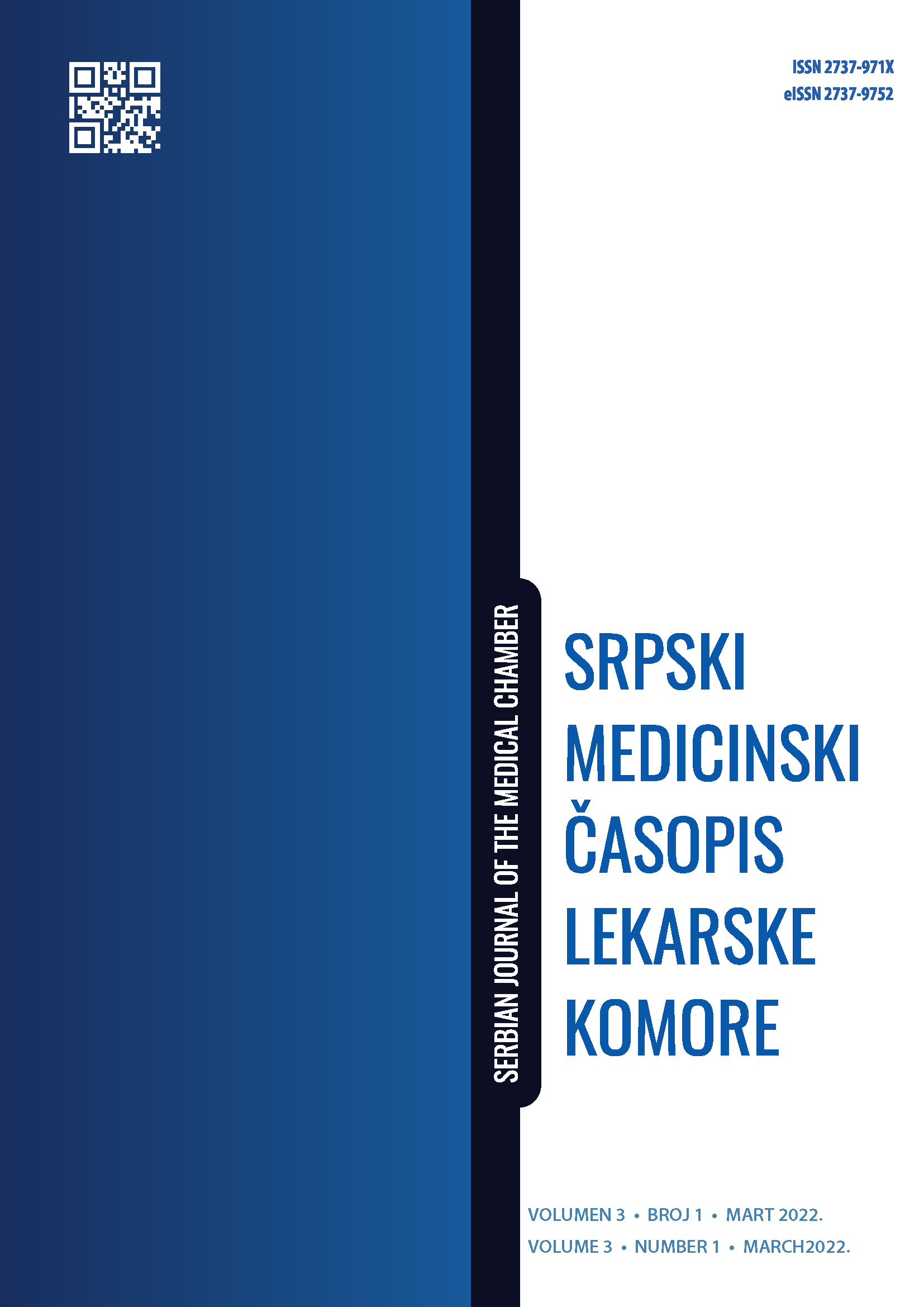ERYSIPELAS IN A CAT-BITE VICTIM CAUSED BY PASTEURELLA MULTOCIDA - CASE REPORT
Abstract
Introduction: Erysipelas is a characteristic form of acute superficial streptococcal cellulitis, usually treated in outpatient service, primarily with penicillin, or erythromycin, in cases where the patient is allergic to penicillin. We are reporting the case of a patient who was preventively treated with erythromycin, after a cat bite, but during treatment developed erysipelas, which, after a swab sample from the wound was analyzed, proved to be caused by Pasteurella multocida, resistant to erythromycin.
Case report: A 53-year-old woman came to the outpatient clinic with clinical signs of erysipelas cruris. Seven days before, she had been bitten by her own cat. The wound was surgically treated, and erythromycin, 500 mg qid, was prescribed as prophylaxis of wound infection. There were no signs of infection. On the 5th
day following the bite, the patient was running a very high fever (39.2°C), but she was without other symptoms, thus the fever was considered to be a symptom of the flu. On the following day, prominent erythematous swelling appeared around the site of the wound, with localized lymphangitis and regional lymphadenitis, and discharge from the wound. The diagnosis of erysipelas was made. The peripheral blood test results were as follows: WBC = 13.9 x 109/l; NE = 82%, CRP = 43 IU. A swab sample was collected from the wound and the patient was started on penicillin. On the 7th day of penicillin administration, there were no signs of inflammation, while the blood test results were as follows: WBC = 5.1 x 109/l; NE = 52%; CRP = 24 IU. Pasteurella multocida, resistant to erythromycin but sensitive to penicillin was isolated from the swab sample.
Conclusion: Erysipelas, although an easily recognized clinical entity, can be caused by other microorganisms, besides streptococcus. It is very important to consider this in order to make an accurate diagnosis and prescribe the appropriate therapy.
References
2. Pravilnik o imunizaciji i zaštiti lekovima, Sl.glasnik RS, br 45/2018
3. John M.Boyce, Pasteurella species, in Mandell, Douglas and Benett’s Principles and Practice in Infectious Diseases, 4th edition, 1995: 2068-2070
4. Savić B, Ivetić V, Milošević B, Valter D, Radovanović O, i sa. 2003. Reproduktivni i respiratorni sindrom svinja (PRRS) sa posebnim osvrtom na respiratornu formu kod zalučene prasadi, Zbornik referata i kratkih sadržaja simpozijuma V epizootiološki dani sa međunarodnim učešćem, Subotica, 316-321
5. Žutić, M., Ivetić, V., Drezga, J., Markić, Z., Mrenoški, S., Pleuropneumonia in farm condition, Mac.Vet.Rev. 1999;28:51-56
6. Radovanović O, Žutić J, Jakić Dimić D, Kureljušić B, Savić B,The Prevalence of Pasteurella Multocida from Farm Pigs in Serbia, Mac Vet Rev 2016;39(1):39-42
DOI https://doi.org/10.1515/macvetrev-2015-0063 Published online 15 Mar 2016
7. Lindberg J, Fredriksen W, Gahr-Hansen B, Bruun B, Problems of identification in clinicaal microbiology exemplified by pig bite wound infection, Zentralbl.Bacteriol.1998;288:491-494
8. Brue C, Chosidow O, Pasteurella multocida wound infection and cellulitis, Inter.J.Dermatol, 1994;33:471-473
9. Heydemann,J., Heydemann,S.J., Suresh,A., Acute infection of a total knee arthroplasty caused by Pasteurella multocida: a case report and a comprehensive review of the literature in the last 10 years, J Appl Microbiol,2016;121(5):1254-1267.
10. Suvajdžić, Lj., Mrđa, E., Džambas, Lj., Bogavac, M., Isolation of Pasteurella Multocida Subspec. Multocida from Chronic Periapical Lesion, Zbornik Matice Srpske za prirodne nauke 2006;110:29-34
11. Fukumoto, Y.,Moriyama,Y.,Iguro,Y.,Toda,R.,Taira,A., Pasteurella multocida endocarditis: raport of a Case, Surgety Today, 2002;32:513-15
12. Shimzu, T.,Hasegawa,K.,Mitsubashi,Y.,Kojima,S.,Ishikawa,K., et al, A Case of Pasteurella multocida subsp.multocida due to a cat bites in liver cirrhosis patient,Kansenshogaku Zasshi, 1995; 69(11):1302-1306
13. Janković, J., Vesović, R., Đurđević, N.,Mitić, J., Hemopthysis. Is it caused by Pasteurella multocida infection or congenital pulmonary artery anomalies? Germs, 2019; 9(4):193-197
14. Wade,T.,Booy, R.,Teare,E.L., Kroll,S. Pasteurella multocida meningitis in infancy (a lick may be as bad as a bite), Eur J Pediatr, 1999;158:875-878
15. Webe,r DJ, Wolfson, JS, Swartz, MN, et al, Pasteurella multocida infections. Report of 34 cases and review of literture. Medicine 1984; 63:133-154
16. Bilić V, Žutić M, Osetljivost prema antibioticima i kemofarmaceutskim preparatima bakterija izdvojenih iz organa svinja, Praxis Vet.1982;30:61-65
17. Driessche, V.L., Bokma,J., Gille,L., Ceyssens,P.J., et al,Rapid detection of tetracycline resistance in bovine Pasteurella multocida isolates by MALDI Biotyper antibiotic susceptibility test rapid assay (MBT-ASTRA), J Am Vet Med Assoc, 1998;212(7):1001-1005, DOI: 10.1038/s41598-018-31562-8, PMID: 30206239
18. Singer,R.S., Case,J.T.,Carpenter,T.E.,Walker,R.L., Assessment of spatial and temporal clustering of ampicillin- and tetracycline-resistant strains of Pasteurella multocida and P haemolytica isolated from cattle in California, Tijdschr Diergeneeskd, 2000;125(5):147-52, PMID: 9540872

